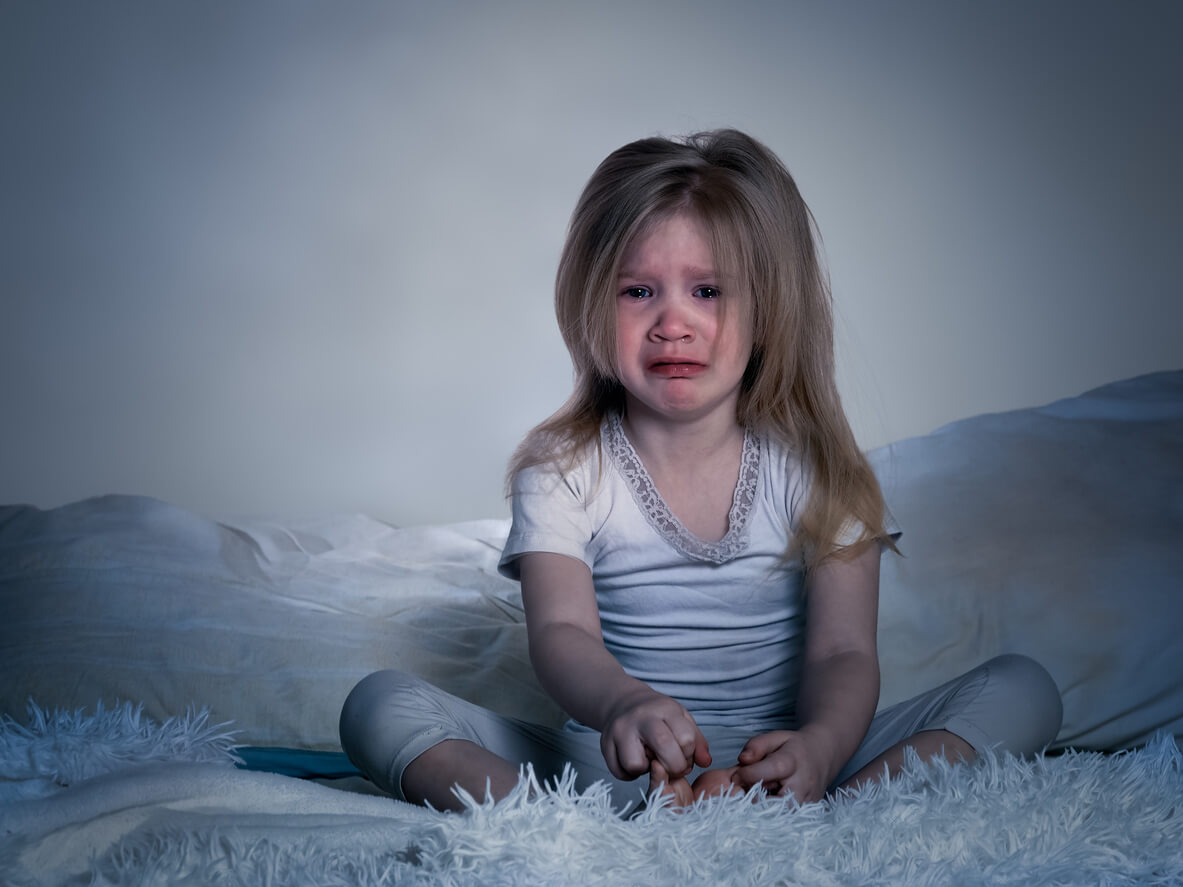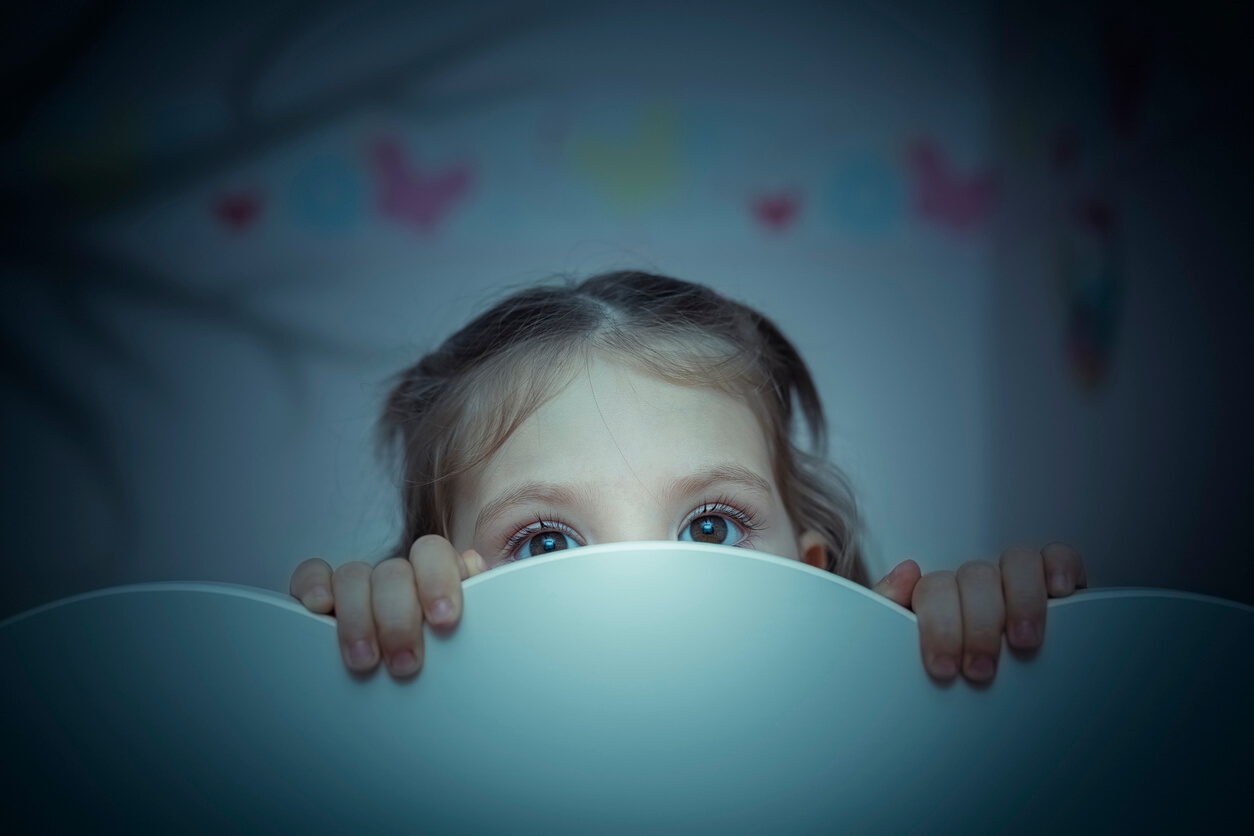Complex Trauma in Children: How to Treat It?

We speak of complex trauma when a situation has such an impact that it explodes and leaves a mark on the life of the person who experienced it. It’s as if that scene is repeated every day and manifests itself in multiple ways. The complexity derives from the different layers that form this wound and that must be repaired with patience and affection. Let’s look at what complex trauma in children is all about and how to help them.
What is complex trauma in children and what does it involve?
Complex trauma in children refers to ongoing and prolonged exposure to traumatizing situations. These include violence, neglect, abuse, torture, and neglect, among others. Traumatic situations can also arise in cases of war, natural disasters, and forced migration. Children may have been direct victims, witnesses, or both.
How does complex trauma in children manifest itself?

Let’s look at some of the symptoms of complex trauma in children:
Our body has memory
The body is the spokesperson for the discomfort experienced. In some cases, especially where the antecedent is physical or sexual abuse, children feel shame or discomfort related to their own body. For this reason, they may provoke self-harm.
Some of the psychosomatic signs may be headaches, tummy aches, allergies, tremors, skin rashes, sleeping difficulties, or nightmares, among others.
Intrusive memories appear
Sometimes, children have attacks of anguish and fear. We find unexplained crying after an apparently normal situation. What happens is that certain experiences have been stored in their memory that, not having been processed, burst in. For example, an image or a certain smell can be a trigger of such experiences.
There are also other cognitive signs, such as difficulties concentrating and paying attention or the appearance of flashbacks with scenes from the past, among others.
There’s emotional dysregulation
Emotional regulation has to do with the ability to give an adaptive and functional response to certain situations. In the case of very young children, it’s still a developing skill that improves with time. For children who’ve experienced complex trauma, emotional dysregulation prevails, i.e., a disproportionate, extreme, or abrupt response.
In general, these children may be alert or, on the contrary, they may seem disconnected, as if nothing is happening. For example, it may be manifested by highly sensitive reactions to noises, fear of the dark, or fear of being left alone. Also, they may experience hopelessness and loss of interest and the enjoyment of activities they once enjoyed.
You may be interested in: Family Trauma: How to Face It Together

How to deal with complex trauma in children
As a starting point, we must accept that we need specialized help, as the impact of this experience usually invades several spheres of the child’s life. Some of the recommendations to care for a child who’s experiencing complex trauma are the following:
- Provide a safe and protective context. Let’s remember that this child is on alert and in a defensive attitude. Therefore, we must provide support and create a space for listening and affection. A supportive environment should be predictable and organized. Maintaining a routine is often helpful, but we must also be able to offer some flexibility when children need it.
- Help them to express their emotions and set limits. It’s important that children learn to express what they feel, show refusal, and recognize what they like and what they don’t like. It’s always important to ask them what they need and how we can help them. We must avoid imposing our own way of helping. In this regard, listening and asking questions is the best way to validate a child.
- Provide spaces for play and dialogue. We can accompany children in the reworking of their trauma through stories. Sometimes they’re able to identify with the characters and can begin to recognize their emotions. For example, it’s very common for them to feel guilty for what happened. They even tend to think that they could have done something to avoid what happened to them or what they witnessed. It’s important to be able to help them to disarm what they experienced and to build a new story with a more pleasant and positive ending. In addition, we can suggest accompanying them in those activities that they used to enjoy.
- Teach relaxation techniques. With children, what works is to think of entertaining exercises, such as inflating and deflating their chest like a balloon to exercise breathing.
- Avoid overprotection. Many times we can fall into the temptation of wanting to control everything so as not to expose them to a new negative experience. However, what we need to do is accompany the child and give them the tools to feel safe.
You may be interested in: The Emotional Impact of Trauma on Children
For complex trauma in children: Hope
Finally, it’s worth noting that having lived through trauma doesn’t mean that we can’t recover, improve, and have a full life. It’s important to talk to children and transmit hope, as well as educate and support resilience. To do this, we can use examples in which we point out that, just as an ointment is applied to physical wounds, different actions can also be taken to heal their emotional wounds.
Finally, the approach to complex trauma in children requires multiple “hands on deck”. For example, the attention of loved ones, the child’s pediatrician, their psychologist, their school, and ensuring a healthy environment. Especially because trauma isn’t limited only to the event that occurred, but is actualized and relived in different circumstances.
All cited sources were thoroughly reviewed by our team to ensure their quality, reliability, currency, and validity. The bibliography of this article was considered reliable and of academic or scientific accuracy.
- Acevedo, F. L., Guajardo, H., Kushner, D., Barrientos, C., & Monje, G. (2021). La complejidad del trauma complejo del desarrollo: una propuesta del modelo de apego & complejidad (MAC). Revista de psicoterapia, 32(120), 105-124.
- Morales Aguilar, D. P. (2018). Desafíos en psicoterapia: trauma complejo, apego y disociación. Avances En Psicología, 26(2), 135–144. https://doi.org/10.33539/avpsicol.2018.v26n2.1186
- Pérez, I. M. C., López-Soler, C., Alcántara-López, M., Sáez, M. C., Fernández-Fernández, V., & Pérez, A. M. (2020). Consecuencias del maltrato crónico intrafamiliar en la infancia: trauma del desarrollo. Papeles del psicólogo, 41(3), 219-232.
